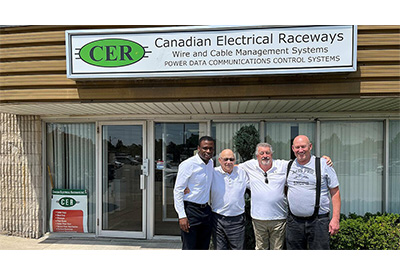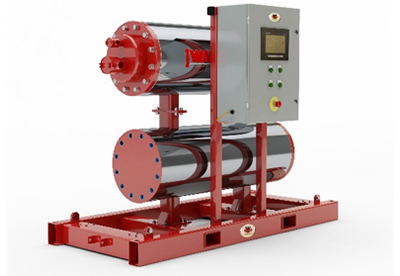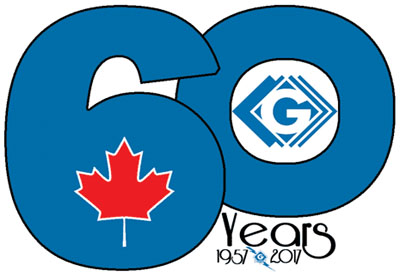What is Good “Product Content”?

November 9, 2017
By David Gordon
For the past few years electrical distributors have been actively investing in (with the hope of eventually deploying) commerce-enabled websites. This has necessitated that distributors become acquainted with, focus on, invest in and develop product content (data) to power their systems.
And they’ve had to learn the difference between product content that is sufficient / usable for their ERP system (transactional and supply-chain oriented) and product content that is suitable for customers (commerce enabled).
All content originates, to some degree, from manufacturers as they define the attributes and features of their products that they design, and that are installed / used by customers. Sometimes their “product content” is used on their website; sometimes their website’s copy has been enhanced by their marketing department.
For distributors and e-distributors / retailers, there are a few data sources:
- IDEA
- Trade Service
- Distributor Data Solutions
- Unilog
- XOLogic
- Direct from manufacturer
- Distributor developed / enhanced (e.g., commitment to adding people, reassigning people, adding to existing staff responsibilities)
- AD Content Services (available only to AD members and sub-contracted to Unilog)
And here is where the challenge is!
In the survey we’ve recently conducted regarding ecommerce and supported by numerous interviews, when respondents were asked “Which two of these would be most helpful in increasing your eCommerce sales,” the #2 answer was “Better product content.”
During the interviews, and in prior conversations with clients and other distributors, when asked about the “quality” of product quality (and sometimes unsolicited when asked about when their website would go live), regularly distributors comment that “the content is bad,” with many reverting to dedicating internal personnel to enhance or create content, enhancing IDEA provided content, or changing content providers (from one of the above to another of the above).
At the same time they all recognize that this is an advantage for Amazon Business and Grainger. Additionally, they question how distributors in other industries readily have access to sufficient eCommerce data (even small distributors). A distributor who also is involved in True Value recently commented:
This whole eCommerce thing we have been reading about… (which is really just an insurance policy for future possible purchasing behaviours) on the distribution side of business wrestling with it is silly. On the retail side, with the same vendors, we had this figured out years ago. The retail electronic content is better, cheaper and more available for the same products. What’s crazy is the vendors cooperated on the retail side years ago to make it happen (Lowes/HD, Ace, True Value;) on the ED side we are grinding through the process and reinventing the wheel. The question should be asked, if they have done it for retail, why so slow and dragging the feet on the ED side of the business? Some of it is self-inflicted. Both IDEA and Trade Service are run by people that have never run a distributor before and spend time telling us what we need rather than asking the vendors for what we want. Add to this is the inability of the industry to speak to manufactures clearly with one voice… Guess it speaks to how fragmented the industry still can be.
But the terms “good” and “bad” are relative, judgmental, terms. The base content all comes from manufacturers. Rarely, if ever, has customer input been solicited. Amazon Business and Grainger, whom are viewed as the gold standards” still get their base content from manufacturers and then invest monies to enhance but the question is
… what defines “good” content? “Bad” content?
And yes, I agree there should be consistency for basic terms (e.g., how many ways to spell “black”), as well as standardization in formatting (e.g., font size, italics, bold, etc.).
… or is the content currently available in the marketplace “sufficient” for customer searching and ordering so that websites can go live quicker and then the content incrementally improved over time?
Perhaps those of you who evaluate content or have referred to content as “good” or “bad” can share some of your criterion… even if anonymously?
And remember, manufacturers are asking the same question, as they
- have funded IDEA
- have added people to aggregate, “enhance” and provide their information to provide to IDEA, Trade Service and direct to distributors
- hear / see that others are “enhancing” / “changing” their data
- are questioning why some of their services / groups / distributors are asking them to further fund “product content development”
And speaking of product content, are you truly speaking your customers’ language? Years ago Trade Slang compiled a list of product slang that contractors and installers use. Recently Elliott Electric resurrected and added to the list as a service to its customers, salespeople and maybe its website. Check it out: http://www.electricalslang.com/
Some thoughts
- Should “perfect” product content today be the reason why your commerce-enabled website hasn’t been launched?
- If content is why your site hasn’t been launched, are you providing others, including Amazon Business, with first mover advantage by them offering an eCommerce ordering option for your customers?
- With the industry investing “millions and millions” into IDEA and the IDW, why isn’t it at least sufficient to power a first generation website?
- With product content for eCommerce being a “moving target” (it can always be improved), and there will always be new products, product updates, product deletions, additional content attributes / information (think about 3D imaging or possibly virtual reality or ???), won’t there always be a need for product?
- How much can distributors afford to spend on product data for their ERP system and then for their website?
- Is product content a differentiator when, in a high percentage of customer requests, customers know what they need?
So, what’s “good”? What’s “bad”? Can someone define or share examples?
David Gordon is President of Channel Marketing Group. Channel Marketing Group develops market share and growth strategies for manufacturers and distributors and develops market research. CMG’s specialty is the electrical industry. He also authors an electrical industry blog, www.electricaltrends.com. He can be reached at 919-488-8635 or dgordon@channelmkt.com.











